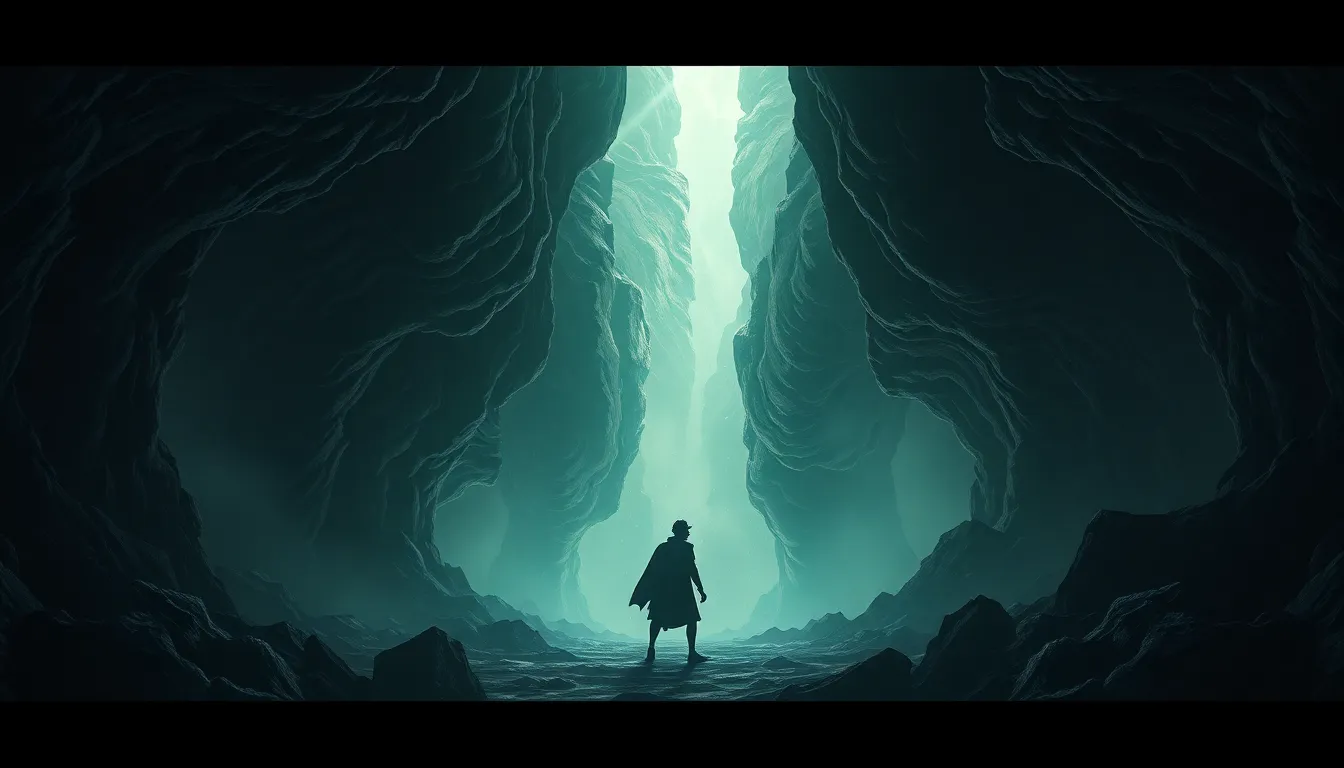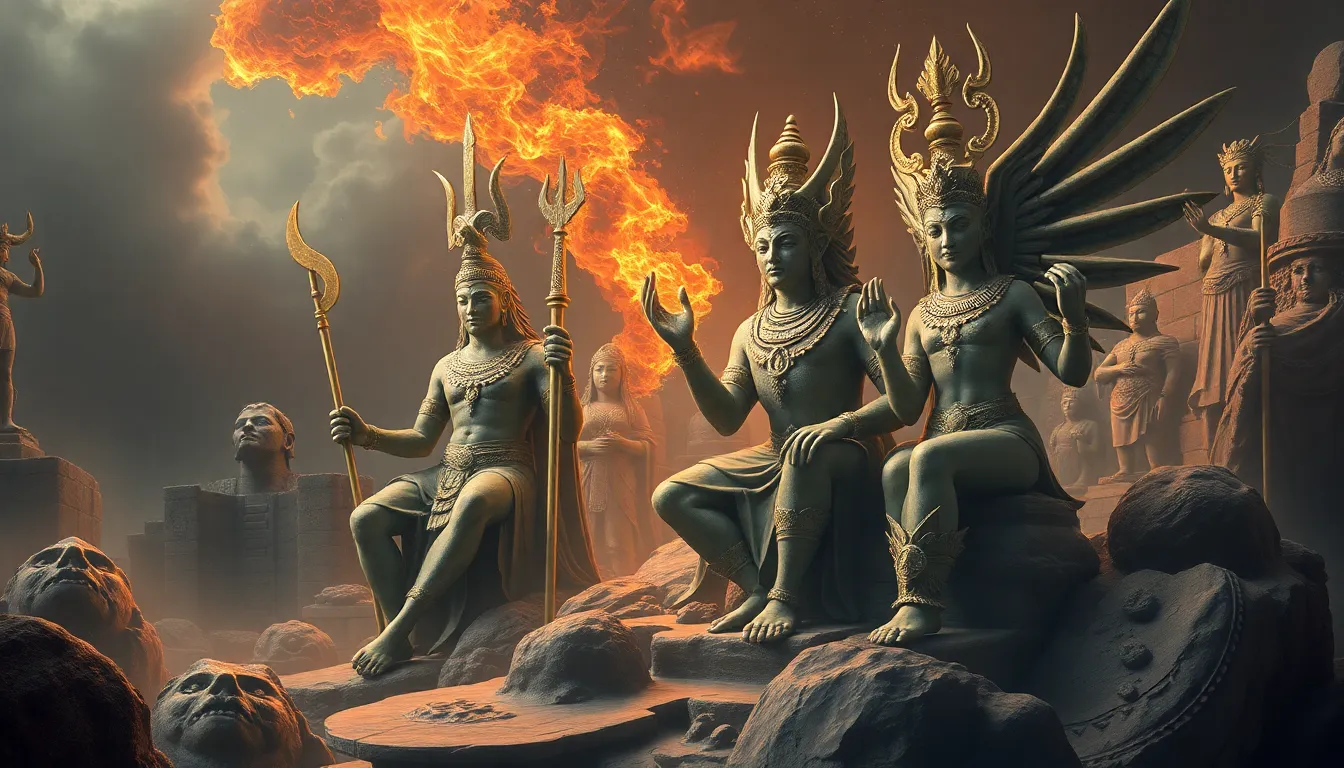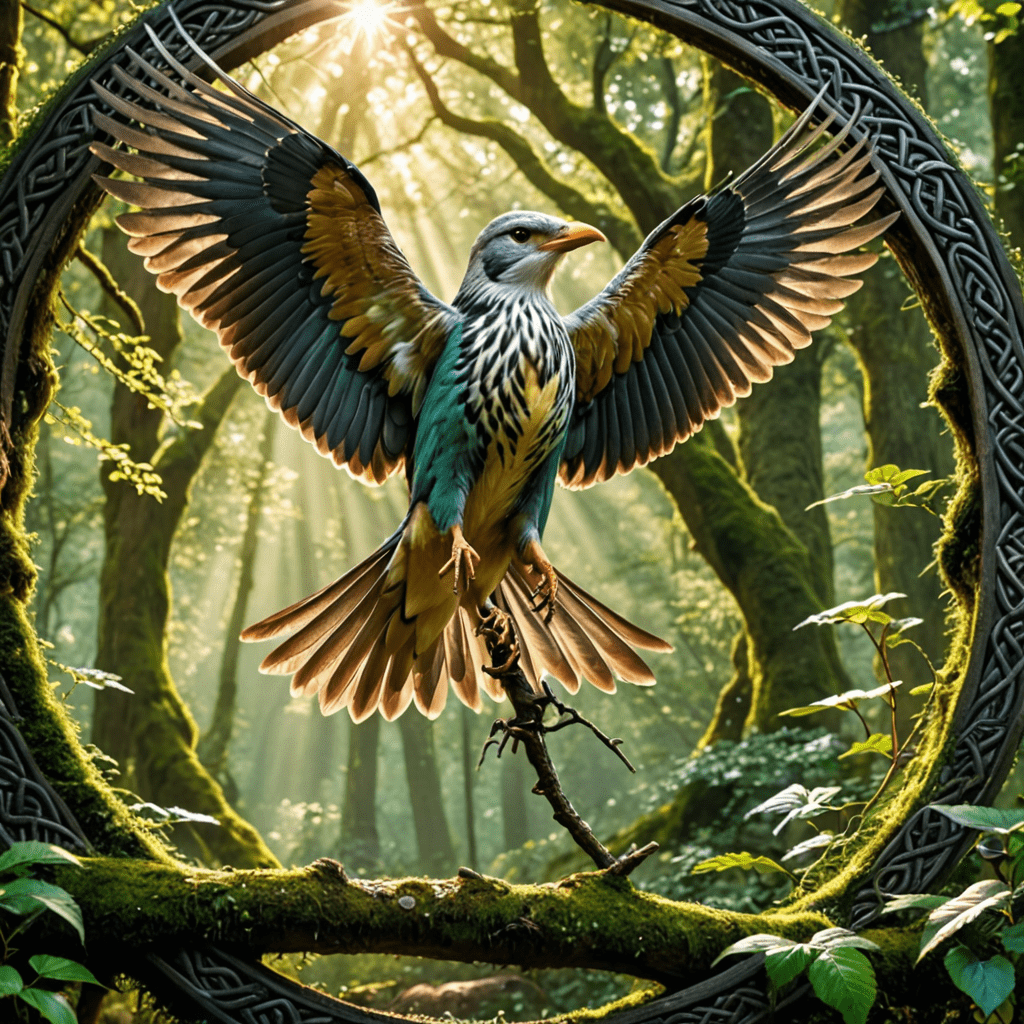The Underworld: A Mythical Exploration of Fear and Courage
I. Introduction to the Underworld
The concept of the underworld has fascinated humanity throughout history, serving as a powerful symbol in various mythologies around the globe. Often depicted as a realm beneath the earth, it represents not only the final destination of the dead but also a place where fears and courage intertwine. In this article, we will explore the significance of the underworld in different cultures, focusing on its dual themes of fear and courage.
The purpose of this exploration is to gain a deeper understanding of how the underworld has influenced human thought and storytelling, shaping our views on mortality, the afterlife, and the human experience.
II. Historical Perspectives on the Underworld
A. Ancient civilizations and their views of the afterlife
Throughout ancient civilizations, the underworld was a central theme in the belief systems regarding life after death. Each culture had its unique interpretation of what awaited souls beyond the mortal realm.
1. Mesopotamian beliefs
In Mesopotamian mythology, the underworld, known as Kur, was a dreary place ruled by the goddess Ereshkigal. Souls were believed to descend into Kur, where they would lead a shadowy existence. This belief highlighted the inevitability of death and the fear of what lay beyond.
2. Egyptian mythology and the Duat
The Egyptians envisioned the Duat as a complex underworld that one must navigate after death. It was filled with obstacles and challenges, and the heart of the deceased would be weighed against the feather of Ma’at to determine their fate. This journey emphasized the courage required to face the unknown and the significance of living a just life.
3. Greek and Roman interpretations
The Greeks and Romans depicted the underworld as Hades, a realm divided into different sections like the Elysian Fields and Tartarus. The journey to Hades was perilous, often requiring the deceased to cross the River Styx with the ferryman Charon. These narratives highlighted not only the fear of death but also the courage needed to confront one’s fate.
B. The evolution of the underworld concept through time
As societies evolved, so too did their interpretations of the underworld. The underworld transitioned from a place of fear to a more nuanced understanding of life, death, and the afterlife. This evolution reflects changes in cultural attitudes toward mortality and the human condition.
III. Symbolism of the Underworld in Mythology
A. Common symbols associated with the underworld
Various symbols are commonly associated with the underworld across different mythologies, often representing the themes of fear and courage.
1. Rivers (e.g., Styx, Acheron)
Rivers like the Styx and Acheron symbolize the boundary between the living and the dead. Crossing these rivers often requires courage and signifies the transition into the unknown.
2. Guardians (e.g., Charon, Cerberus)
Guardians of the underworld, such as Charon, the ferryman, and Cerberus, the three-headed dog, embody the fearsome aspects of death and the afterlife. They challenge the souls of the deceased, emphasizing the need for courage to face one’s ultimate fate.
B. The significance of darkness and the unknown in mythological narratives
The darkness of the underworld often symbolizes the fears that lie within the human psyche. It represents the unknown, the uncertainty of what happens after death, and the inner struggles individuals face. Mythological narratives highlight the bravery required to confront these fears, showcasing the transformative journeys of heroes and heroines.
IV. Fear: The Underworld as a Representation of Human Anxiety
A. Psychological interpretations of the underworld
Psychologically, the underworld serves as a metaphor for human anxiety and existential dread. It reflects our fears of death, loss, and the unknown, prompting individuals to grapple with their mortality.
B. The role of fear in mythological journeys (e.g., descent into the underworld)
Many mythological journeys involve a descent into the underworld, symbolizing a confrontation with fear. These narratives often depict characters facing trials that require immense courage to overcome their anxieties and emerge transformed.
C. How different cultures embody fear through their underworld myths
Different cultures embody fear in unique ways through their myths. For example, in Norse mythology, the underworld is represented by Hel, a place for those who did not die gloriously in battle. This reflects the cultural anxiety surrounding honor and bravery in life and death.
V. Courage: Heroic Journeys and Confrontations
A. Notable mythological heroes who ventured into the underworld
Many heroes in mythology are celebrated for their courageous journeys into the underworld, where they confront their fears and undertake significant quests.
1. Orpheus and his quest to retrieve Eurydice
Orpheus’s descent into the underworld to save his beloved Eurydice is a poignant tale of love and loss. His music softens the hearts of Hades and Persephone, showcasing the power of art and courage in the face of despair.
2. Odysseus’s journey to the land of the dead
In Homer’s “Odyssey,” Odysseus travels to the land of the dead to seek guidance from the prophet Tiresias. This journey underscores the importance of knowledge and the courage to confront one’s past.
3. Inanna’s descent and its implications
The Sumerian goddess Inanna’s descent into the underworld is a powerful narrative of transformation. Her journey leads to her eventual resurrection, symbolizing the cyclical nature of life, death, and rebirth.
B. The transformative power of courage in these narratives
These mythological tales illustrate how courage transforms characters, allowing them to confront their fears and emerge stronger. The underworld, in this context, becomes a crucible for personal growth and enlightenment.
VI. The Underworld in Literature and Art
A. Influential works depicting the underworld (e.g., Dante’s “Inferno”)
Dante Alighieri’s “Inferno” is a seminal work that explores the underworld through the lens of the Christian afterlife. Dante’s journey through the nine circles of hell serves as a profound reflection on sin, redemption, and the consequences of one’s actions.
B. Artistic representations across cultures and their impact on societal views of fear and courage
Artists throughout history have depicted the underworld in various forms, influencing societal perceptions of fear and courage. From paintings to sculptures, these representations often evoke powerful emotions, inviting contemplation on mortality and the human experience.
C. Modern adaptations and reinterpretations of underworld myths
Modern literature, films, and television shows frequently draw from underworld myths, reinterpreting them for contemporary audiences. These adaptations often highlight themes of personal struggle, resilience, and the courage to face one’s demons.
VII. The Underworld in Contemporary Culture
A. The underworld motif in film and television (e.g., Hades in modern media)
In contemporary media, the underworld motif continues to resonate, with films and television series exploring themes of death, the afterlife, and redemption. For example, adaptations of Greek mythology, such as the portrayal of Hades, have captivated modern audiences, blending ancient themes with contemporary storytelling.
B. Video games and interactive narratives exploring the underworld
Video games like “Hades” and “God of War” allow players to engage with underworld narratives interactively, exploring themes of fear, courage, and personal growth. These games provide a unique platform for players to confront their fears and make choices that affect their journey.
C. The resurgence of interest in mythology in popular culture
The




